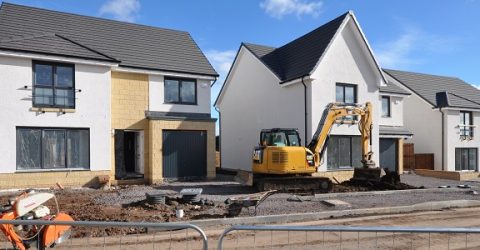Does every new home now have gigabit broadband access?
Housebuilders will soon be legally obligated to ensure new homes receive gigabit broadband access, preparing residents for a connected future

In 2013, a new housing development on the northern edge of Carlisle made headlines thanks to a unique technological achievement.
The Crindledyke Farm development offered gigabit broadband access thanks to line speeds of 1000Mbps – or 1Gbps.
At a time when a large percentage of the UK population was struggling with 11Mbps Fibre to the Cabinet connections, this seemed almost implausibly fast.
Yet gigabit broadband access is increasingly seen as essential. Around 20 billion web-enabled Internet of Things devices are expected to be online by 2025.
As a result, the UK Government will begin forcing housebuilders to ensure new homes are gigabit-enabled from the day their first owners move in.
In March, the Department for Digital Culture, Media and Sport announced it will legally require housebuilders to pre-cable every new property with internet speeds of 1Gbps or more.
It’s worth noting that building regulations are devolved, but Westminster will work with Holyrood, Stormont and the Senedd to ensure this rollout occurs throughout the UK.
Digital hard core
The installation of what the DCMS calls ‘high quality digital infrastructure’ will be a priority for proposed developments, and on-site work won’t commence until an agreement is in place.
Builders must contribute up to £2,000 per property, with broadband firms paying up to £1,400 more on top.
However, developers can negotiate deals with any broadband supplier or installation specialist.
Story Homes tasked Carlisle-based Solway Communications with installing fibre-optic connectivity at Crindledyke Farm, rather than asking Openreach or Virgin Media.
Pre-cabling a development at the foundations stage is far cheaper than retrospectively installing cabling into completed streets.
And the provision of ultra-fast broadband will undoubtedly become a key selling point for new homes, alongside energy efficiency and high-spec kitchens and bathrooms.
Work in progress
You may have noticed this article keeps referring to things which will happen, rather than things which already have.
That’s because only 80 per cent of new properties currently have gigabit line speeds.
Smaller developments with fewer economies of scale often fall short of 1Gbps, especially as niche builders struggle to match the deals larger companies can negotiate with broadband firms.
Rural developments also face higher installation costs than urban ones, where existing gigabit cabling is literally around the corner.
And there may be exemptions for developments where gigabit installation simply isn’t economically justifiable.
Yet despite these challenges, gigabit broadband access represents a win for everyone.
Builders have another standard specification to tempt buyers out of older properties, while the Government improves the UK’s standing in international line speed league tables.
Communities and homeowners get to enjoy the myriad benefits of ultra-fast connectivity, and broadband firms won’t have to upgrade existing infrastructure in future.
Best of all, new estates will finally become the connected communities we’ve been promised for so long.
It shouldn’t be long before every new house buyer receives the ultra-fast connectivity Crindledyke Farm residents have enjoyed since 2013.






